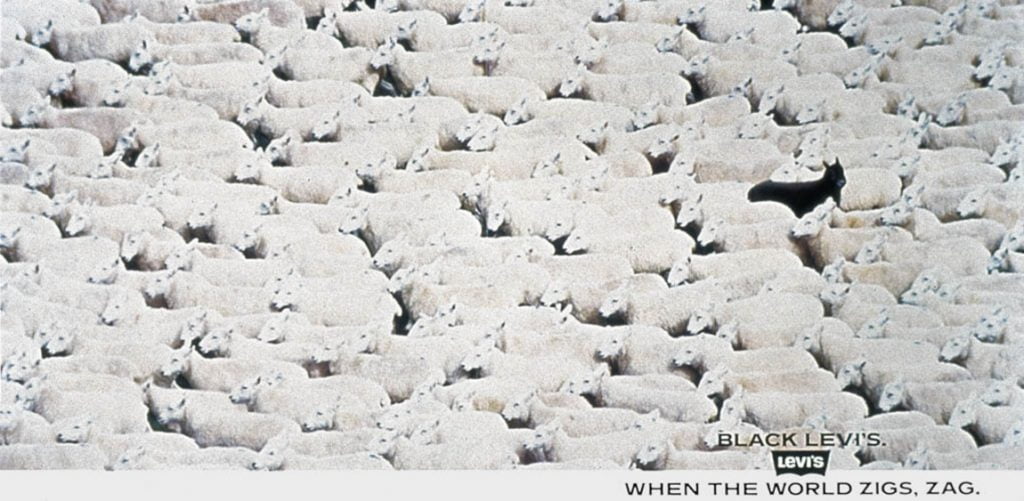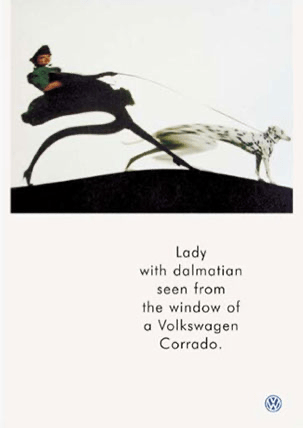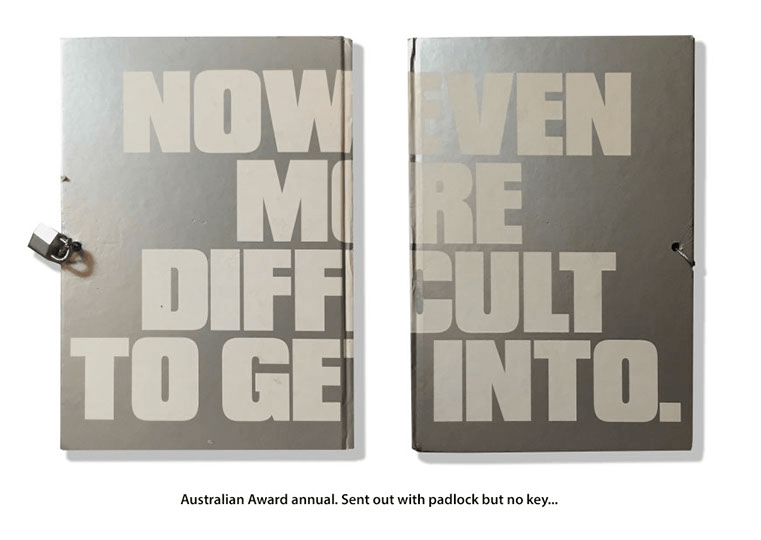Of course the question is extraordinary.
As was the celebrated Art Director who uttered it.
But it did say something about the times.
Why not, for example, stick a car onto a 48-sheet, fly the island of Manhattan across the Atlantic, launch black jeans with a field of sheep or promote a cigarette brand with a swatch of silk?

Why not, indeed, as I did, launch VW’s first proper sports car without a photo of the vehicle itself, promote a malt whisky through a regular column in the Daily Telegraph, putatively authored by a crusty old Highland crofter with only tangential references to the brand, or Burger King with a pack of barefaced lies?


Or even design an award annual with a padlock but no key to open it?

Sound self indulgent?
Not a bit of it.
All of the work referred to above was relevant.
It was the brand itself, Araldite, that was used to stick the car to the billboard; every year BA would fly the equivalent of the entire population of Manhattan across the Atlantic; Levi’s target audience saw themselves as rebels; the Corrado (God rest its soul) was a consummate combination of pace and grace; the malt whisky buff, at least then, was a gentleman of a certain stamp with some very defined views; and, yes, the Aussie Award annual HAD become fiendishly hard to get into.
So, relevance, yes.
But the work of the period had something else too. Impact. Freshness. And the element of surprise.
Intrusive and relevant. These were the watchwords of Saatchi & Saatchi when it actually was, well, Charles & Maurice.
It seemed obvious then. But it perhaps it seems less obvious now.
After all, your communications can be relevant to a fault but if they don’t get noticed, put brutally, they won’t work.
Equally, creative flights of fancy, sans relevance, will fall on stony ground too.
You of course need both.
As in the iconic ‘Pregnant man’ execution which launched the Saatchi philosophy upon an unsuspecting world.
It’s something the industry, on the whole, appears to have lost sight of.
Truly, the lunatics do appear to have taken over the asylum, or, rather, the suits the creative department.
Work such as some of the above, by virtue of deviating from the norm, takes a little time to catch on. So of course it will fall by the wayside in the benighted focus group.
The result is the vanilla world we live in, where advertising has ceased to be a topic of conversation down the proverbial Dog and Duck, where generating word of mouth and free column inches through a transfixed media are but a faint and forlorn memory.
But let’s just return for a moment to that celebrated Art Director and his ambitions to rewrite the dictionary.
In that regard, it’s fair to say, he did not succeed.
But, in helping rewrite the history of advertising, he contributed in spades.
